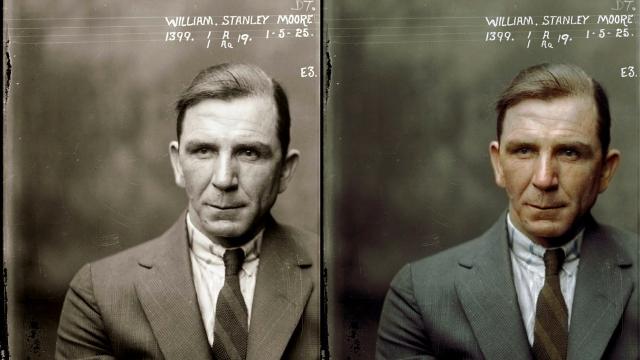Dana Keller is a colouriser. He takes old black-and-white photos and applies his digital paintbrush, transforming them into a new work of art. Colourisation of old photos isn’t new, but it’s becoming increasingly popular on forums like Reddit’s r/ColorizedHistory, where people share their colourised creations. But how do these new works affect our understanding of the past? And what happens when the colourised photos become more popular than the originals?
I chatted with Boston-based artist Dana Keller over email to ask about where he gets his black-and-white photos, what kind of tools he uses to alter them, and how these colourised images might change our understanding of history.
All of the images below have been colourised by Keller, but full image credits for the original photos are at the bottom of this post.
Boys with Easter flowers in New York (1908)

Gizmodo: How long have you been colourizing photos and do you do this as a full time profession? If not, what’s your day job and your background?
Dana Keller: I have been colourising for a little over a year, and I am currently working more or less full time at it. I have an art degree background, along with some years of photography, and I’ve just finished my Masters in Archival Science. I’ve been fortunate enough to be able to rely on colourising as my primary source of income as I was finishing up school, and it’s sort of unexpectedly taken off to be a hobby-turned-profession.
Audrey Hepburn in her Manhattan apartment (1954)
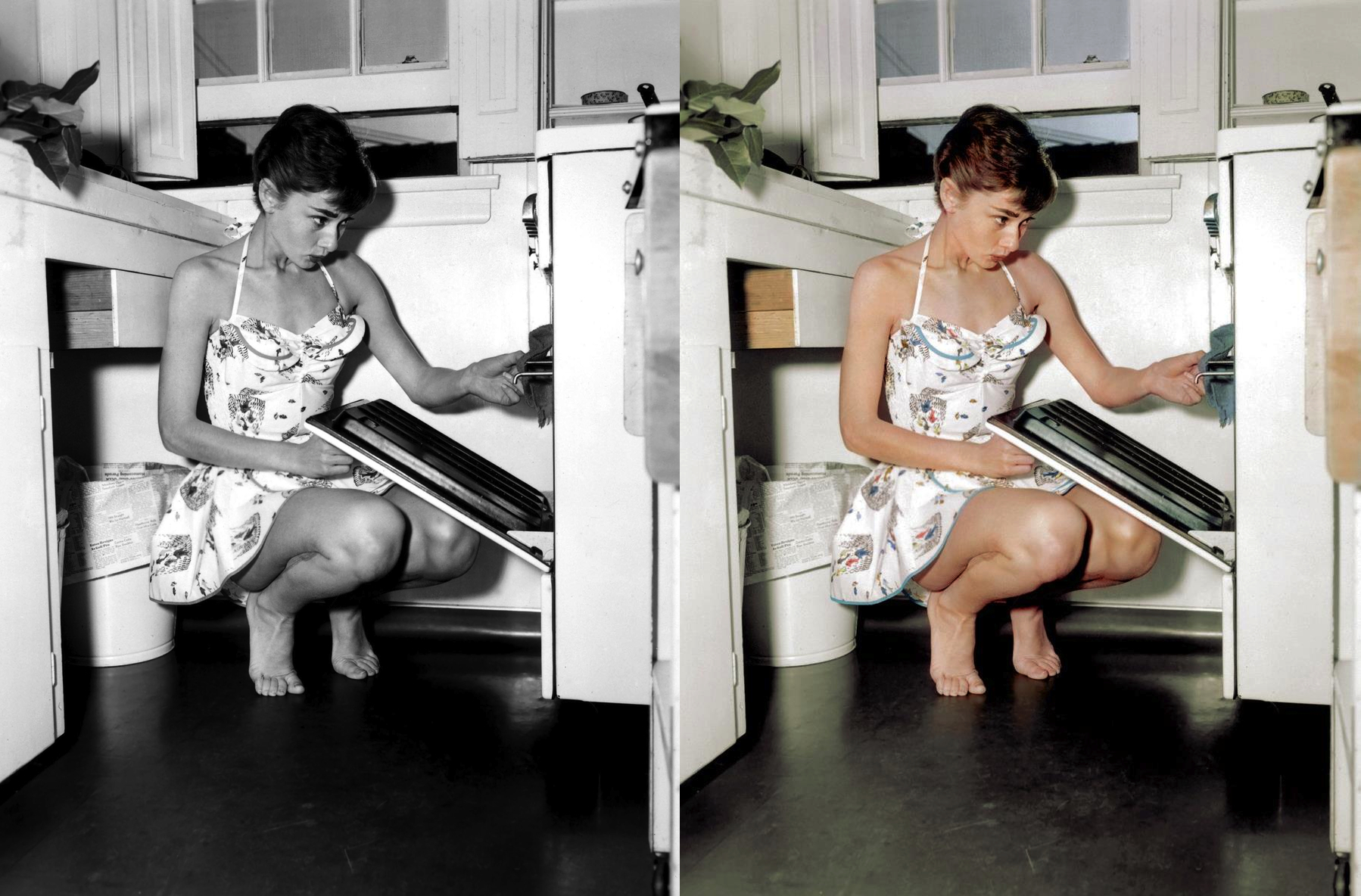
Gizmodo: Why do you think colourised old photos are so popular on the internet right now? Do you have a sense of what percentage of the work on r/ColorizedHistory is your work?
Keller: I think a big part of their popularity now is that there have been some talented artists that have taken colourisation to the next level of realism. Typically one might think of a “colourised photo” as being kind of garish and tasteless, with broad one-colour strokes with no regard to detail or any attempt at subtlety or nuance. All the attention is usually on the colourisation, rather than the photo itself. But a newer generation of colourisers, such as the community of artists at r/ColorizedHistory, approach colourising with a real reverence towards history, using their skills to eliminate the distraction of the “colourisation”, ultimately bringing these scenes to life with a natural realism that hopefully connects the viewer to the past in a new way. Equally as important, there is a great effort in preserving historical authenticity as well, with a lot of painstaking research in order to provide as accurate a depiction as possible.
All of the contributors on /r/ColorizedHistory provide their own original content, and there are probably a half-dozen or so who might be considered “regulars”. I haven’t been as active there recently, but I do try to submit a couple images a month. (I post more frequently on my Facebook page).
Claude Monet in his studio with a panel of his Nympheas mural (circa 1914-1926)
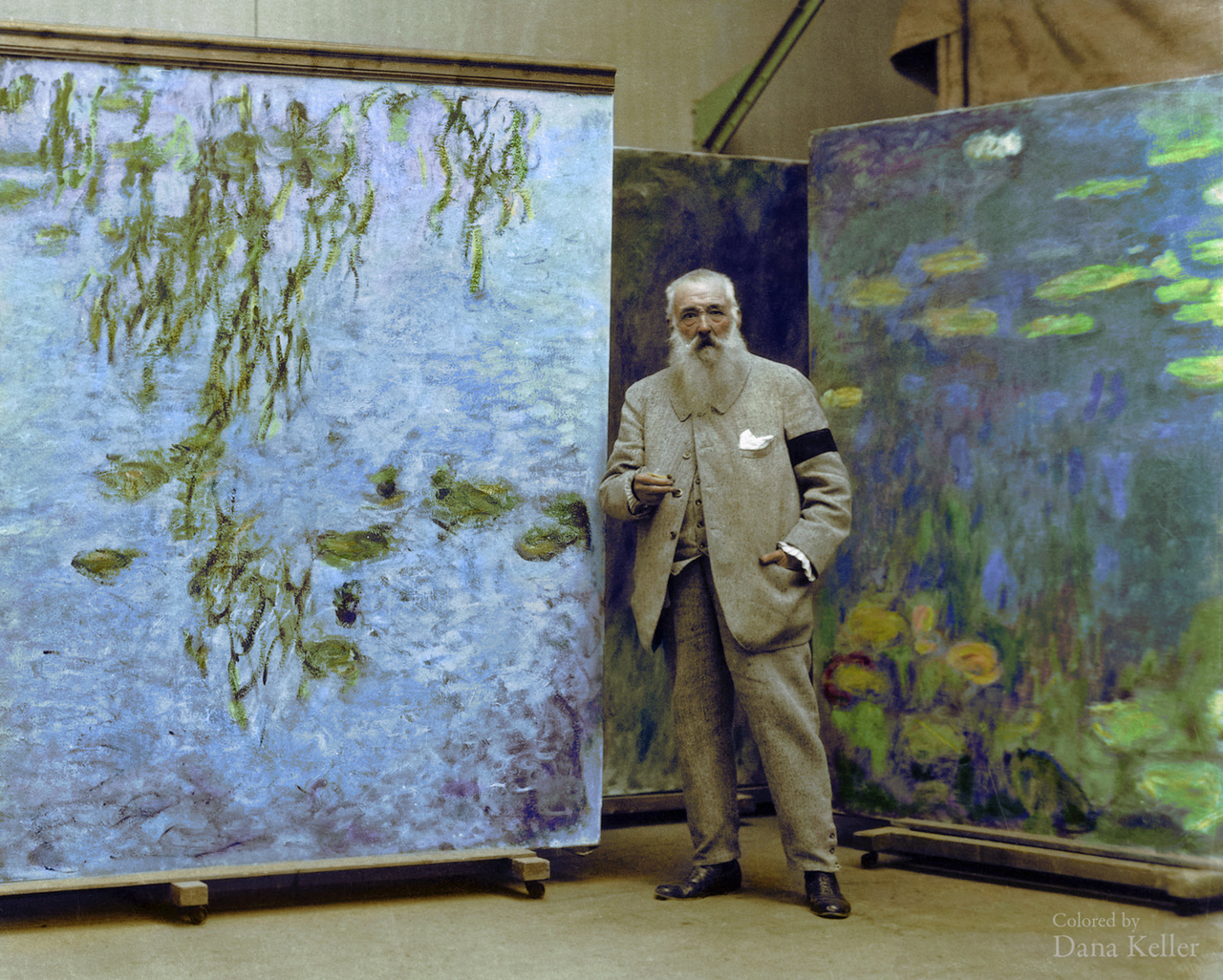
Gizmodo: What’s your favourite place to find photos to colourise? Do you scan them yourself from particular archives or do you find them online? How many photos do you suppose you’ve colourised since you’ve started?
Keller: The Library of Congress photo catalogue is my usual go-to for finding photos. There is so much to find buried there, and usually high-res images are available as well. I have scanned a few images for working on private commissions, but 99% of the photos I colourise are found somewhere online. I’ve lost count on how many I’ve done since I started a little over a year ago, but surely well over 100 by now.
Coney Island, New York (circa 1903-1910)
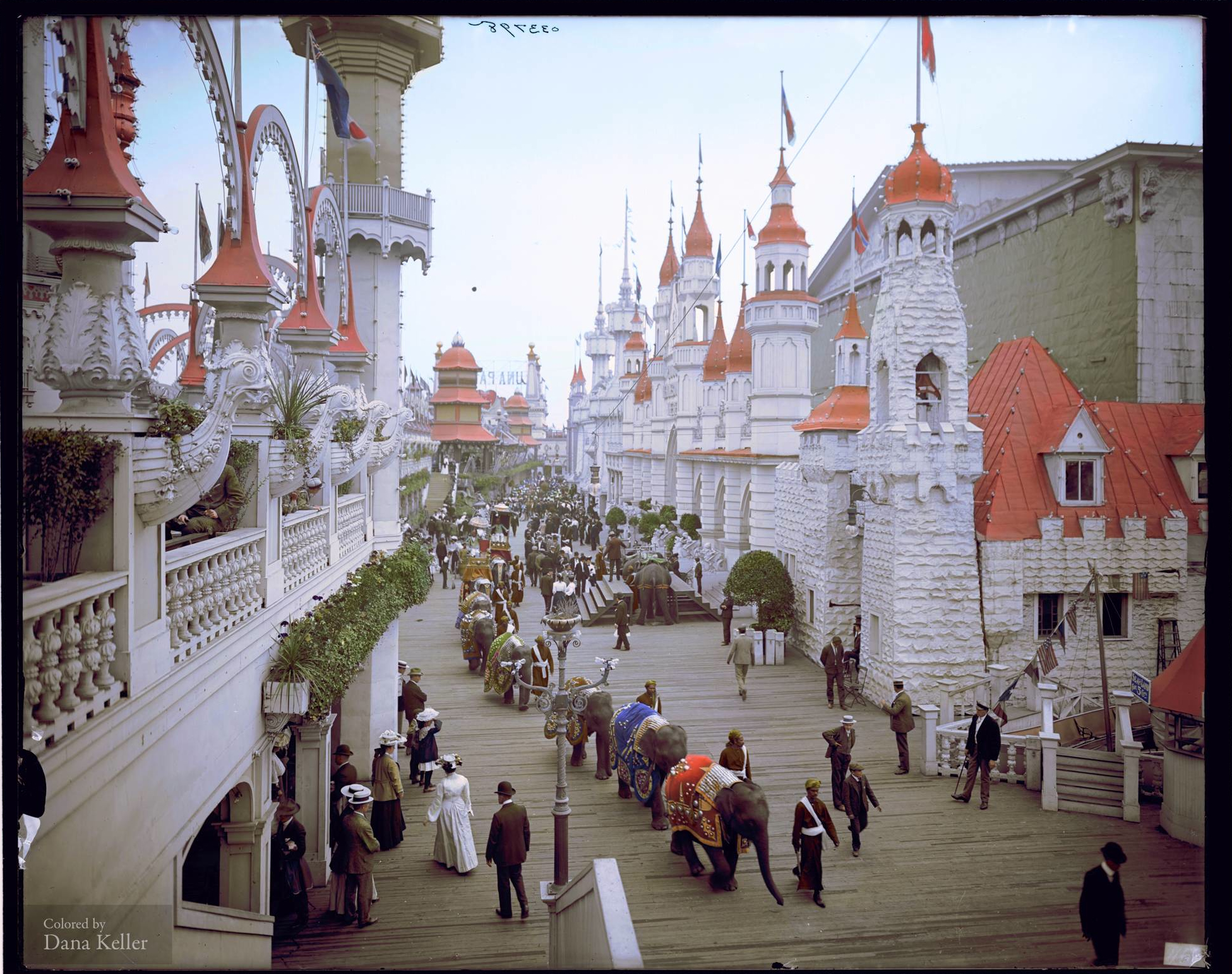
Gizmodo: How do you think modernly colourised old photos affect our understanding of history?
Keller: I think it can be a very powerful tool. If done well, the addition of colour can help “connect” people to history. It can bridge the gap from a seemingly distant event and make it more immediate and relevant. We can also build on any existing knowledge of colours in the image to create a more accurate representation of history.
Girls delivering ice during WWI (1918)
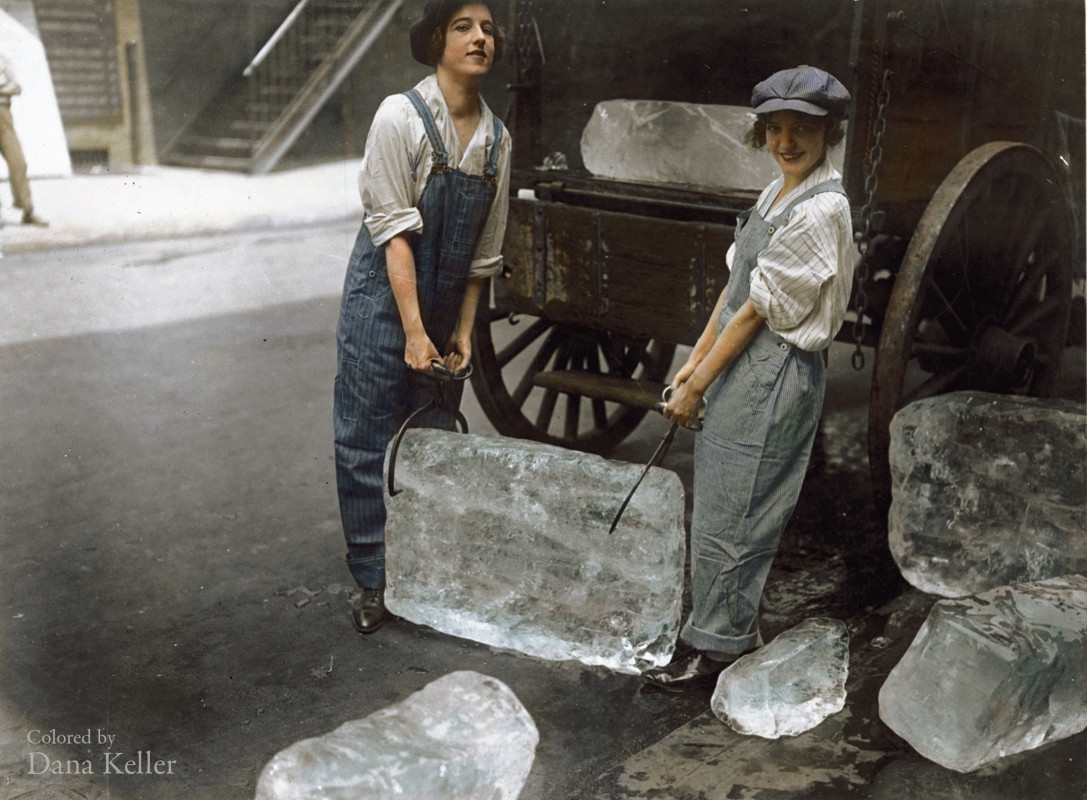
Gizmodo: I recently spoke with a digital artist and he explained that it was fascinating to see his manipulated photos become more prominent in search results than the originals. Do you see any evidence of this in your work, and if so, does this concern you at all?
Keller: I think I have yet to run across my own work before an original, which is probably for the best. When searching for an image, especially of a historical event, I think most people would much rather find an original image than an altered image. I think the only concern would be that if the altered version was a more prominent search result, people may end up confusing it as the original.
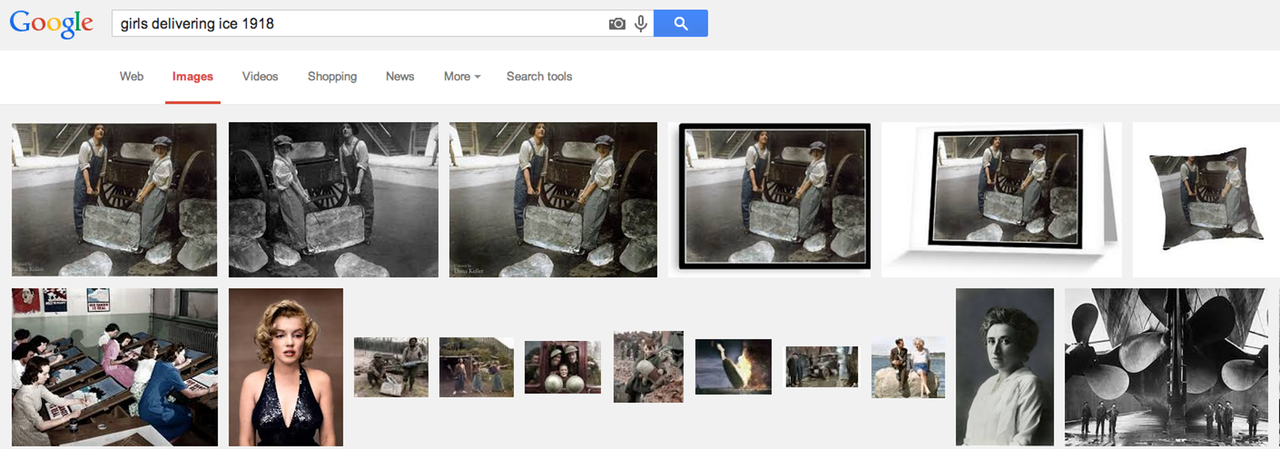
[Follow-up note from Gizmodo: A Google Image search for “girls delivering ice 1918” offers up Keller’s colourised version first. A screenshot of that search is above.]
The short-lived sport of “Auto Polo” (circa 1910-1915)
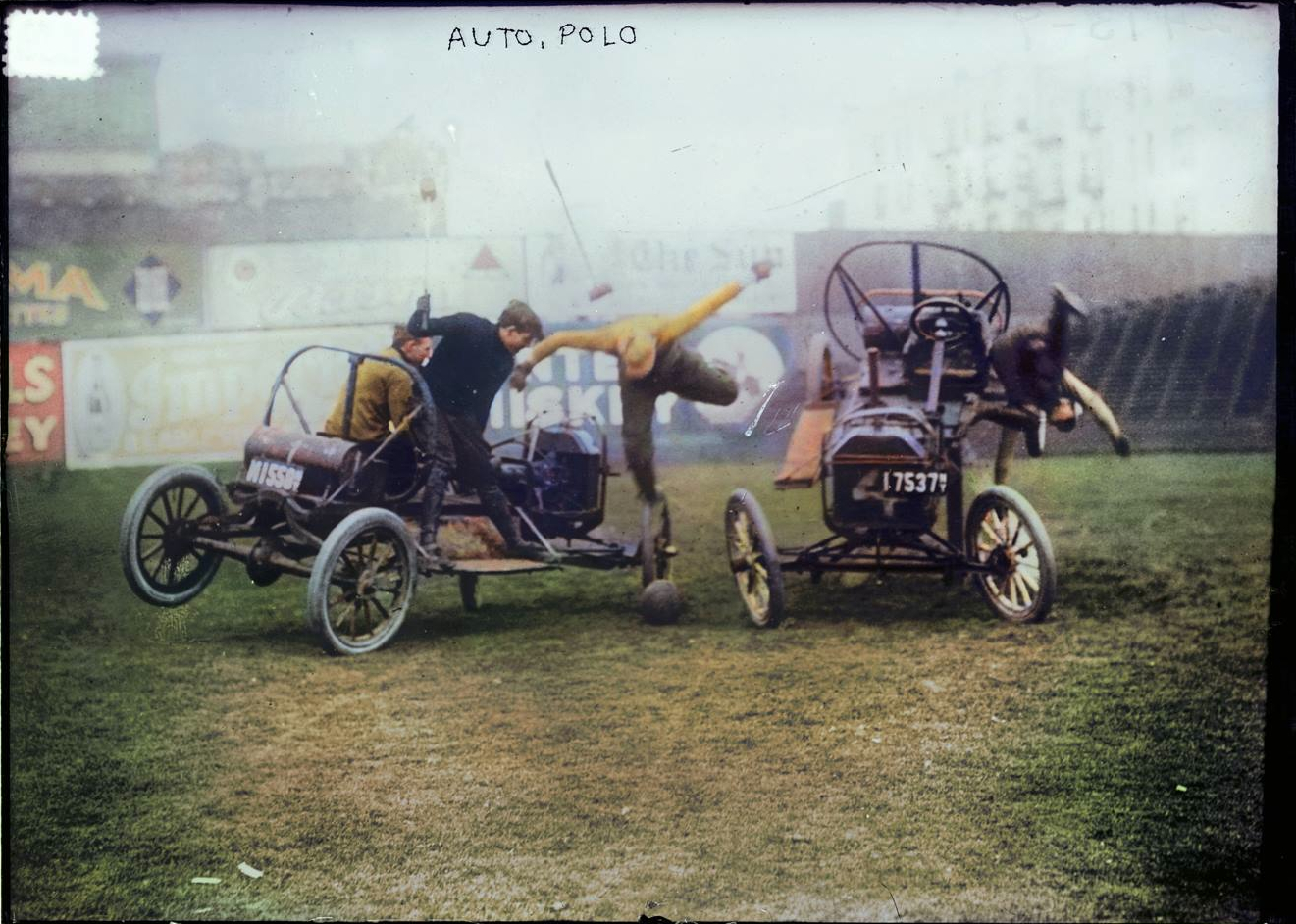
Gizmodo: Which of your colourised photos seem to be most popular and why do you think they are? Do certain kinds of photos sell better in certain mediums? For instance, what is the most popular image for throw pillows? What’s the most popular for posters?
Keller: I think the two most popular are Audrey Hepburn, and the photo of the girls delivering ice. Audrey Hepburn’s popularity is self explanatory (who doesn’t like Audrey?) but I would never have expected the ice girls to have become a leading favourite online, and I still can’t explain it. As far as popularity of mediums, I haven’t really seen any trends. Of the photos available for purchase, Walt Whitman and Lincoln are definitely best sellers.
Louis Armstrong in New York (1946)
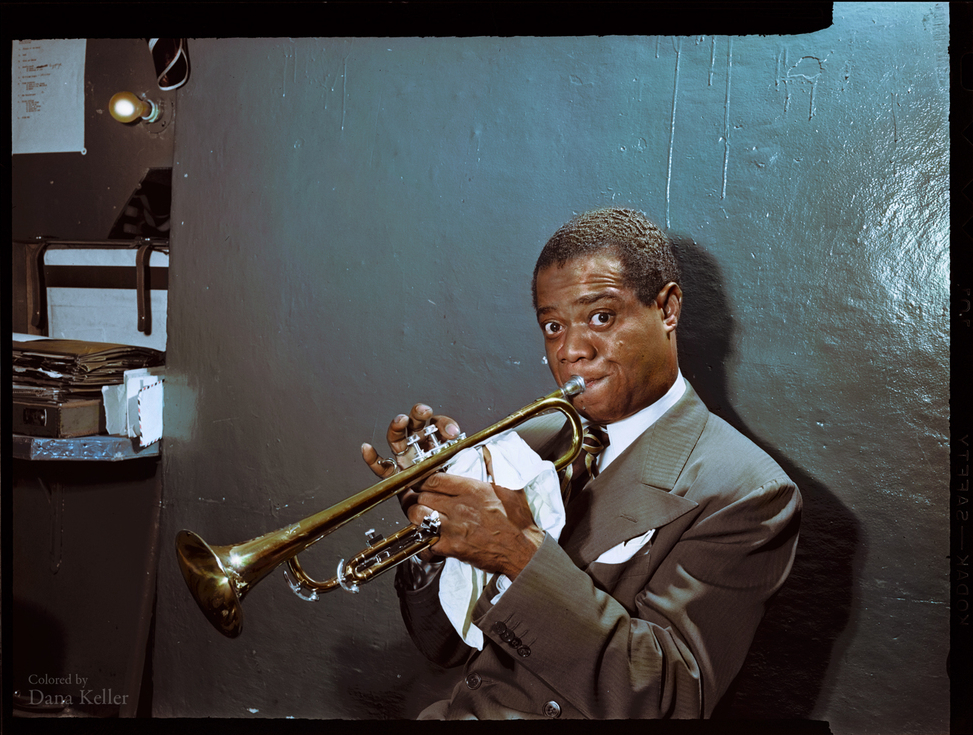
Gizmodo: Is there a historic photo colourisation community? Do you interact much with others who do this kind of work? Do you get much feedback from fans of your work?
r/ColorizedHistory is the only photo colourisation community I’m really involved with (r/Colorization is another great community for people of all skill levels to interact and get feedback from each other). Those of us who regularly contribute there (r/ColorizedHistory) interact and give friendly constructive criticism. Most of my work goes on my Facebook page, and there is always great feedback, and it’s a good mix of people who appreciate the history as well as the work that goes into colourising.
Inventor Nikola Tesla (circa 1894)
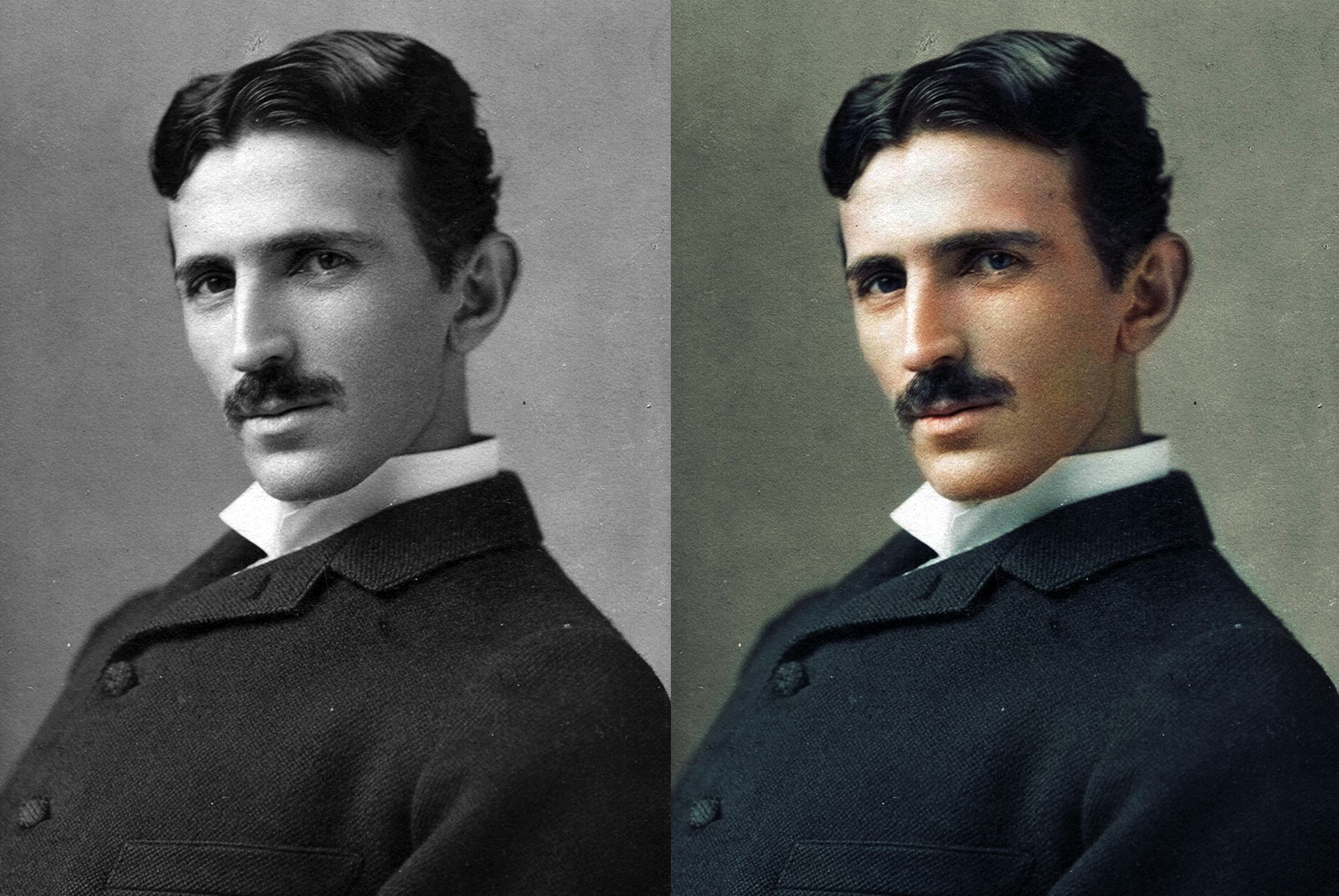
Gizmodo: Obviously most of your photos are almost certainly in the public domain, but have you ever been approached by someone asking you to take down an image due to a copyright dispute?
Keller: I do try and keep to the public domain, almost entirely to avoid any potential copyright disputes. I do my best to research the copyright holders, and I won’t sell any prints of copyrighted works (without permission of course). I haven’t had anyone ask me to take anything down (yet).
Golden Gate Bridge construction (1935)
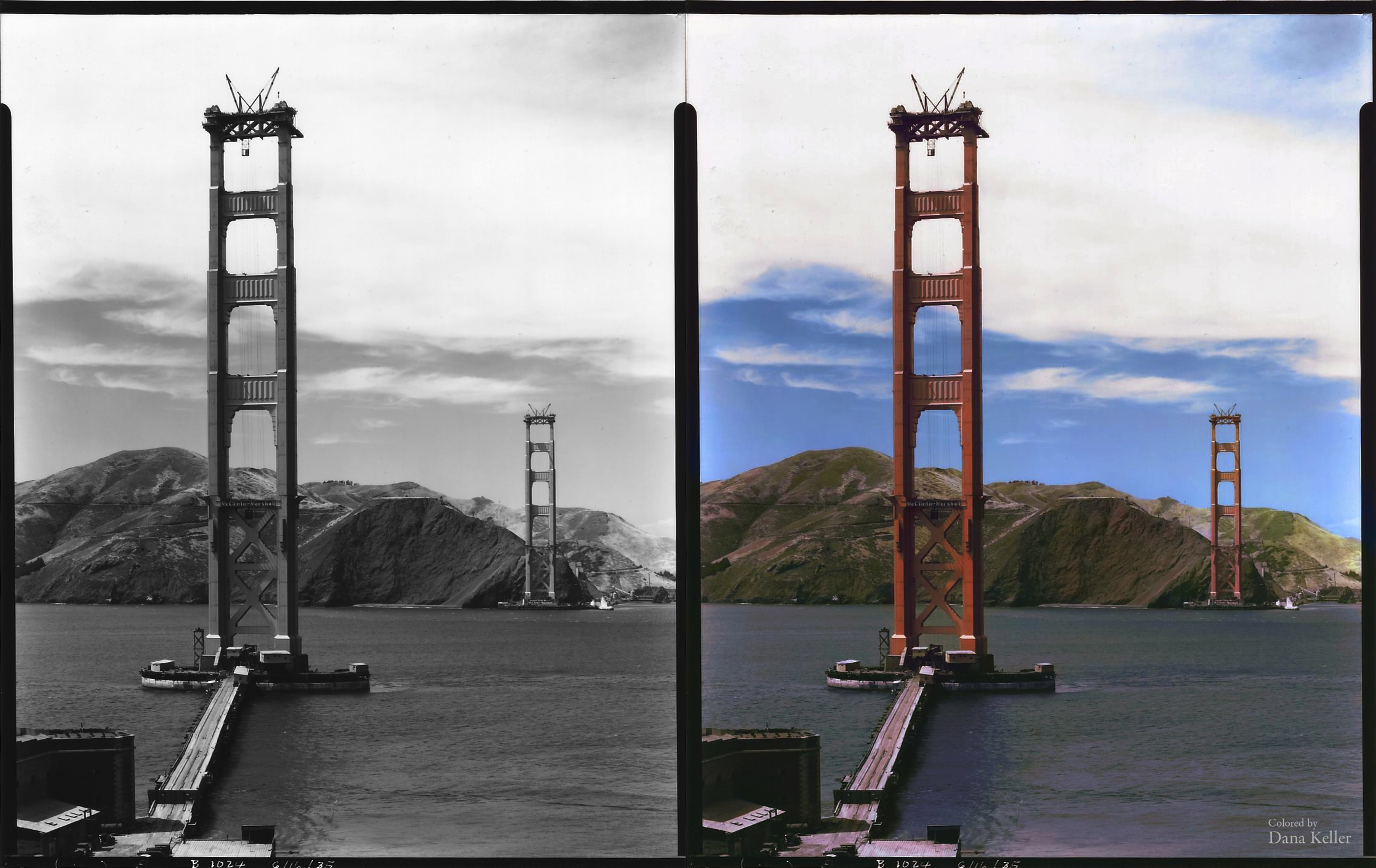
Gizmodo: More broadly, how do you feel about the proliferation of photo accounts on Twitter and Facebook like HistoryInPics and EarthPix?
Keller: They can be great if you’re looking for a constant stream of interesting images. I do follow a couple of these historical accounts to get ideas for potential colourisations, but it can be really difficult to keep up with them all. Because a lot of these accounts tend to be so prolific, the impact and importance of each individual photo can easily be lost among the overwhelming deluge of photos.
Hindenburg disaster (1937)
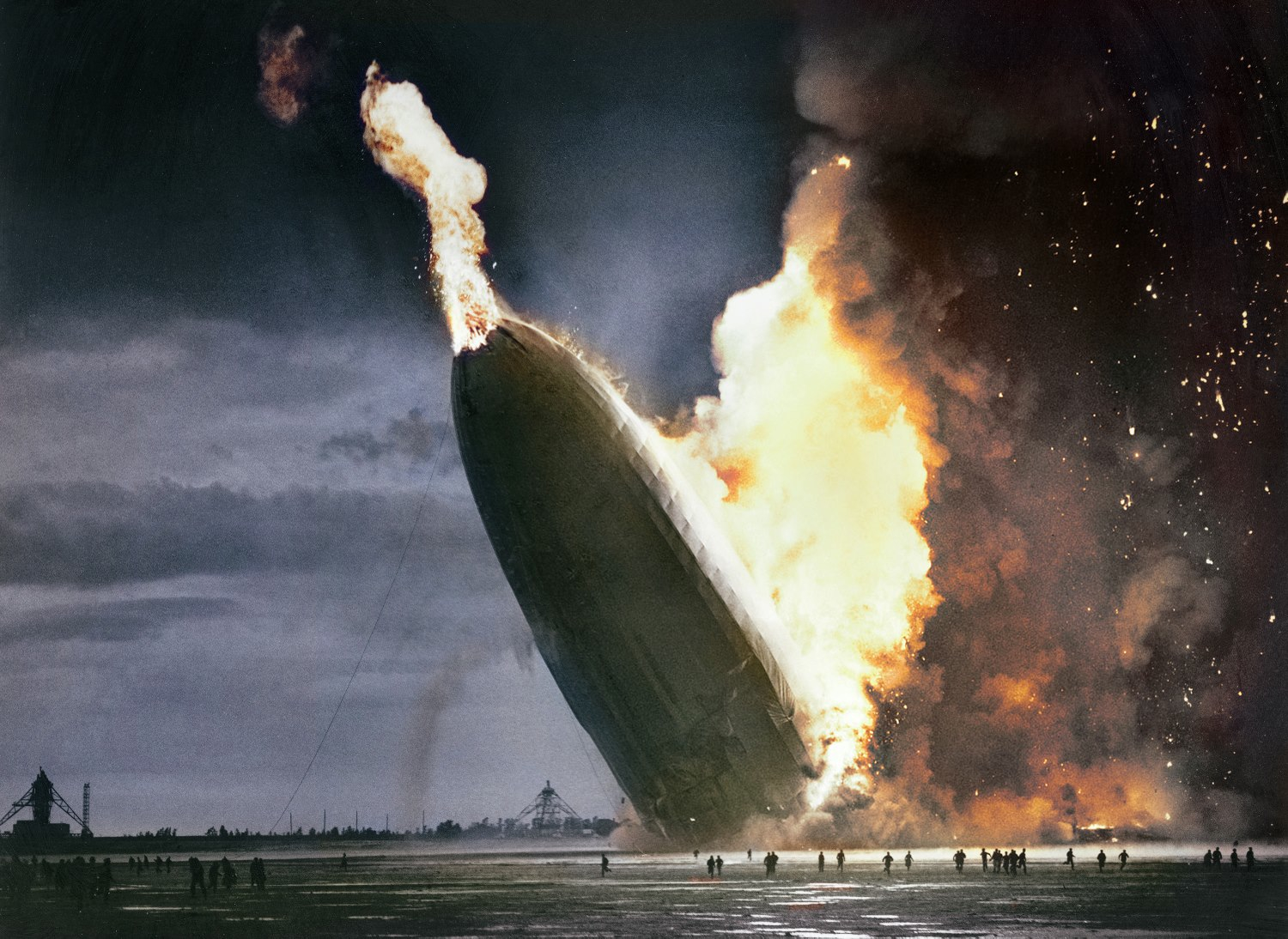
Gizmodo: What kind of tools do you use to colourise (software or otherwise)? How long does your average colourisation take to complete?
Keller: All of my work is done through Photoshop, and I use a Wacom tablet. Each photo is unique in its complexity and detail, so the range of time spent on a colourisation varies greatly. A “typical” studio portrait without a lot of elaborate detail (or marks/scratches to be cleaned up) takes about an hour. Scenes with a lot more elements can take several days to complete.
Images: Mugshot of Australian William Stanley Moore via the Historic Houses Trust archive, colourised by Dana Keller; Boys buying flowers in New York in 1908 via Library of Congress, colourised by Dana Keller; Audrey Hepburn in her Manhattan apartment in 1954, colourised via Dana Keller; Painter Claude Monet circa 1914-1926 as photographed by Underwood & Underwood via Corbis, colourised by Dana Keller; Coney Island promenade circa 1903-1910 originally from the Library of Congress, colourised by Dana Keller; Auto polo circa 1910-1915 via Library of Congress, colourised by Dana Keller; Louis Armstrong circa 1946 originally via Library of Congress, colourised by Dana Keller; Nikola Tesla circa 1894 colourised by Dana Keller; Women delivering ice on September 16, 1918 via the US National Archive, colourised by Dana Keller; Golden Gate Bridge construction 1935 via San Francisco Chronicle via Imgur, colourised by Dana Keller; Hindenburg disaster via Associated Press via The Atlantic, colourised by Dana Keller
